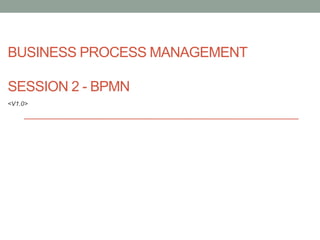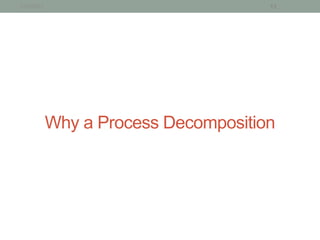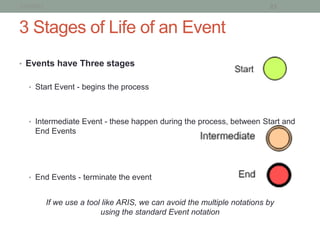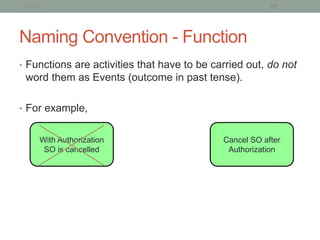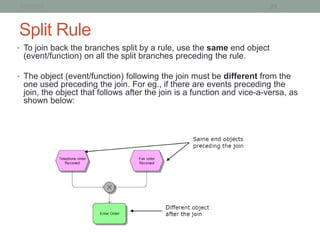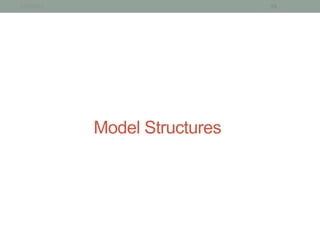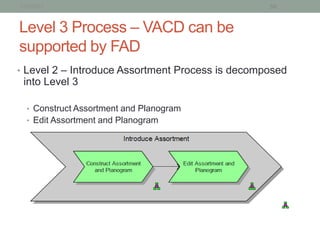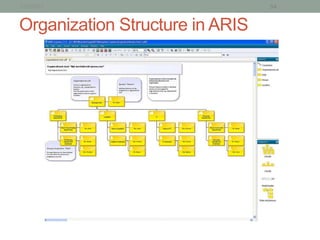This document provides an overview of business process management and modeling techniques. It begins with recapping principles of BPM from the previous session. It then discusses why process decomposition and exception handling are important. The remainder of the document focuses on Business Process Model and Notation (BPMN) including flow objects, connection objects, artifacts, events, functions, naming conventions, and common modeling structures like EPC, VACD, and FAD. It emphasizes using BPMN to clearly communicate business processes and the importance of hierarchy and rules in process modeling. Sample organization charts and process models are also included.
